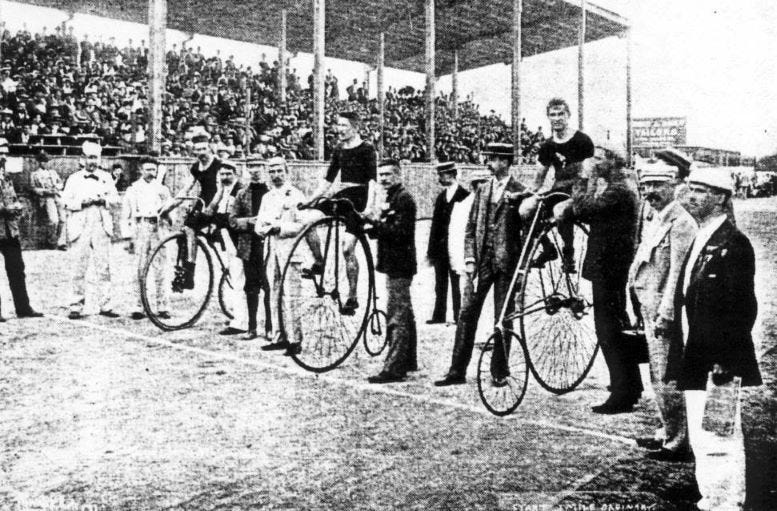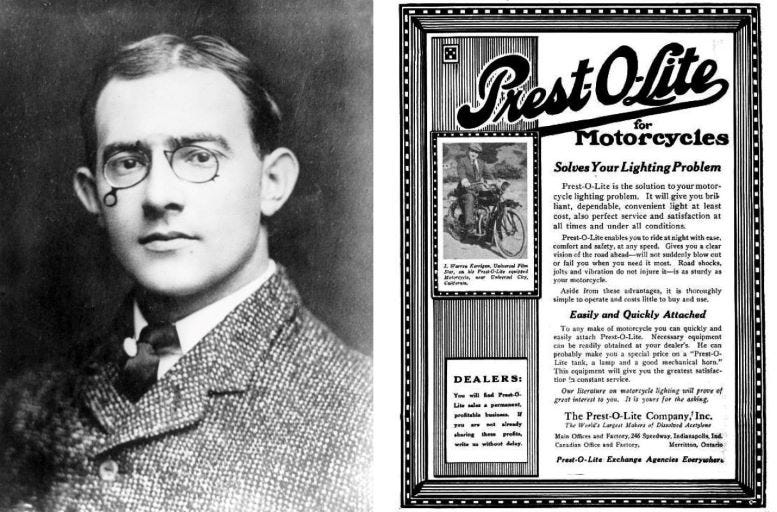Carl Fisher Discovers Miami Beach
On the anniversary of his passing on June 15, 1939, we reflect on the early life of Miami Beach pioneer Carl Fisher.
While the thin barrier isle that would later become the City of Miami Beach was discovered long before Carl Fisher arrived in South Florida, Fisher’s personal discovery of the island was courtesy of serendipity and a chance meeting with a New Jersey Quaker. While the barrier island may have eventually developed into a fine South Florida city without Fisher’s involvement, it may not have evolved into “America’s Winter Playground” without his vision and gravitas.
The City of Miami Beach benefited immensely from Carl Fisher’s resources and vision. Without him, its rapid development, early notoriety, and dramatic beginnings would likely have taken a different course. Fisher’s lasting impact on the city was the product of a lifetime of experience that shaped his bold and ambitious approach from an early age.
A Young Entrepreneur
Carl Fisher was born on January 12, 1874, in Greensburg, Indiana, the second son of Albert H. Fisher and Ida Graham Fisher. His parents separated during his early childhood, largely due to his father’s alcoholism and lack of support. Carl’s mother moved the family to Indianapolis, where she supported herself and her three sons by taking in boarders.
Carl Fisher dropped out of school in the sixth grade due to severe astigmatism, which left him with only half his normal vision. Unable to see the blackboard or keep pace with his classmates—and feeling a responsibility to help his mother support the family—he left school early. That decision marked the beginning of a lifelong path as an entrepreneur.
One of Carl Fisher’s earliest jobs was selling newspapers, books, tobacco, candy, and other goods to passengers at a railway stop in Indianapolis. To catch people’s attention, he wore an apron that, when flipped, revealed a risqué image of a naked woman, a bold tactic that rarely failed to grab a prospective buyer’s attention. Once he had their attention, he often succeeded in making a sale. It quickly became clear that Fisher had a natural talent for salesmanship.
It was during his time working at the railroad that Carl Fisher developed a lifelong passion for reading and learning. Despite his vision problems, he became especially drawn to the works of Robert Ingersoll, whose books he sold to passengers and read himself. Years later, when he built his home on Brickell Avenue in Miami, he had twelve volumes of Ingersoll’s writings bound in maroon linen and stamped in gold, a lasting tribute to the author who had inspired him early on.
After leaving the railroad, Carl Fisher took short-term jobs at a bookstore and a bank, saving enough money to open a bicycle repair shop with his brothers in 1891 when he was just 17. The bicycle craze was sweeping the nation, and he soon joined the Zig-Zag Cycling Club, becoming one of its earliest members. It was through this club that he met Jim Allison, a friend and future business partner in a series of ventures that would play a key role in building Fisher’s fortune.
At 19, Carl Fisher began racing bicycles professionally, drawing on his natural athleticism—he was known to outrun his friends even while running backward. Meanwhile, his bicycle shop was thriving. His early success gave him the confidence to persuade Erland of Cleveland, a bicycle manufacturer, to extend him $50,000 worth of inventory on credit.
With limited funds for advertising, Carl Fisher turned to bold promotional stunts to sell bicycles. He rode a bicycle across a tightrope twelve stories high between buildings, threw a bicycle off a rooftop in downtown Indianapolis, and offered prizes to boost sales. These early lessons in showmanship and promotion became a hallmark of Fisher’s business ventures throughout his career.
Fisher Builds His Fortune
At the dawn of the twentieth century, the automobile craze was in full swing. Seizing the moment, Fisher added a small garage behind his bicycle shop, a move that eventually led to the creation of the Fisher Automobile Company. As he developed a passion for automobile racing, Carl quickly recognized the new opportunities the emerging industry presented.
Carl Fisher’s major breakthrough in the automobile industry wasn’t in building or selling cars, but in solving the challenge of nighttime driving. In the early 1900s, automobiles were equipped with dim kerosene carriage lamps that often blew out in strong winds, leaving drivers in the dark. Recognizing this problem, Fisher devised a practical solution that would improve safety and usability for motorists.
Keep reading with a 7-day free trial
Subscribe to Miami History to keep reading this post and get 7 days of free access to the full post archives.






